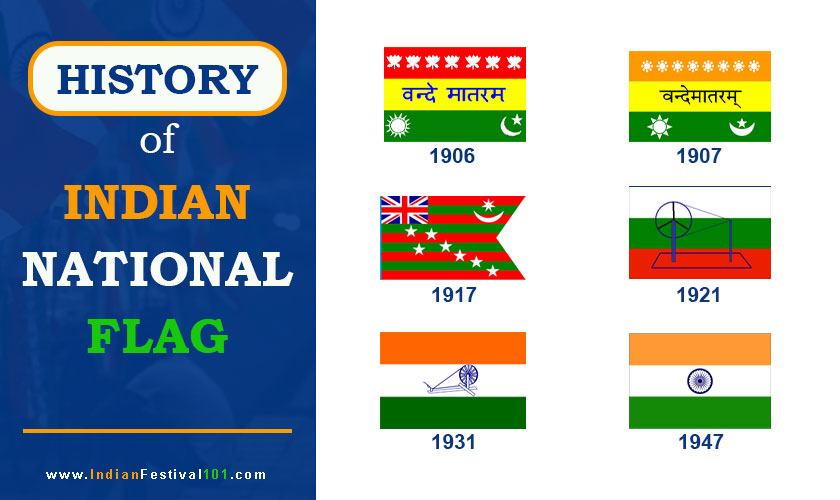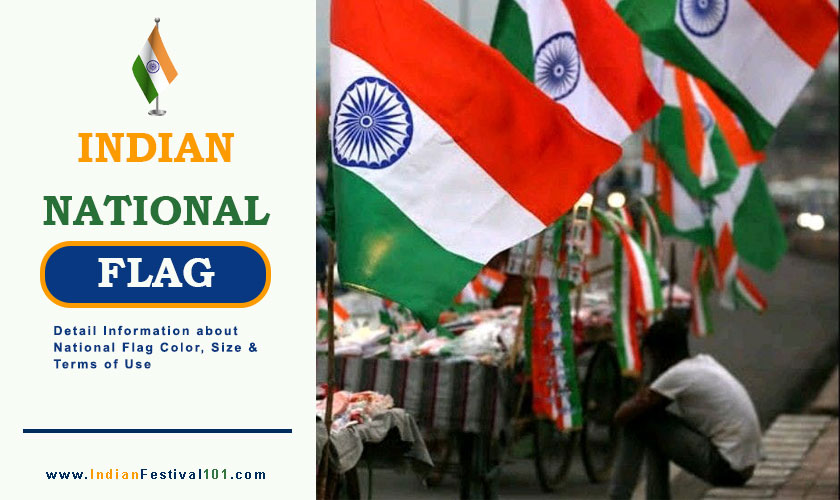The Indian national flag, a tricolor of saffron, white, and green, is a symbol of the nation’s struggle for freedom and its rich cultural heritage. It stands proudly as a testament to the sacrifices made by countless individuals to attain independence. The History of Indian National Flag design and development is quite interesting. After many changes with time what we see today is filled with gratitude in the heart of every Indian. In this article, we will know about the fascinating history of Indian national flag, tracing its origins and evolution with time.
Introduction
The Indian national flag is more than just a piece of cloth. It represents the spirit and aspirations of an entire nation. When we dive into the history of Indian National flag, we can realize its role in India’s struggle for freedom and its ongoing journey toward progress and unity.
History of Indian National Flag
The development of National Flag of India has come over a long way. The design of the Indian flag was changed 6 times. The rules related to it were changed and today the tricolor campaign is being run from house to house. There are total 6 flag of India designed before the final design that what we see today. Here are the details.
First National Flag of India (1906)
The first National flag was hoisted on 7 August 1906 by freedom fighter Surendra Nath Banerjee on Parsi Bagan Chowk (now Green Park) in Kolkata. Thousands of people gathered to celebrate ‘Boycott Day’ to protest against the partition of Bengal.
In this demonstration, for the first time, a flag is hoisted, which is called the first National Flag of India. In the first national flag-
First Indian Flag Design
- There are three stripes green, yellow, and red.
- Vande Mataram was written on the yellow stripe in the middle.
- On the red stripe at the bottom were pictures of the sun and the half-moon.
- At the same time, 8 lotus flowers were made on the top green strip.
Second National Flag of India (1907)
The second National flag was unfurled on 22 August 1907 by Madam Bhikaiji Cama and her companions in Germany. This was called the Berlin Committee Flag.
Second Indian Flag Design
- Three colors were also used in this flag. There were stripes of orange at the top, yellow in the middle, and green at the end.
- There were 8 stars on the orange stripe.
- At the same time, Vande Mataram was written in the yellow stripe in the middle.
- In the green strip at the bottom, there was a picture of a sun and a star above the moon.
Third National Flag of India (1916)
The third National flag was hoisted in 1916 by Bal Gangadhar Tilak’s political organization ‘Home Rule’ made a flag when they were demanding Dominion State from the British. This means that a country that is independent but runs by the law of the British Empire.
Third Indian Flag Design
- On top of this flag was the Union Jack of the British.
- In addition, there were five red and four green stripes.
- It also had seven stars. These stars represented the Saptarishi.
- It had a half-moon and a star on it. However, the people of the country did not accept this flag wholeheartedly.
Fourth National Flag of India (1921)
The fourth National flag began to be made in 1921 by Pingali Venkayya the tricolor flag that we see today. Professor Pingali Venkayya of Madras Presidency College showed Mahatma Gandhi the design of a flag.
It had red stripes for the country’s two major religions, Hindus, and green for Muslims. Lala Hans Raj Sondhi of Arya Samaj suggested to Pingali that there should be a spinning wheel in the middle of this flag. Gandhiji asked to add a white stripe to this flag. Gandhi argued that this color would represent the rest of the religions. In this way, the flag was white at the top, then green and red at the bottom. Finally, Gandhiji asked Venkaiah to show the final design to the Congress meeting in Bezwada. He got the design ready on Khadi in 3 hours.
Fourth Indian Flag Design
- The final design had red and green stripes.
- There was a spinning wheel in the middle of it.
- Both the colors of the flag symbolized the majority population of India i.e. Hindu and Muslim. On the suggestion of Mahatma Gandhi, the white color symbolizing peace was included in the flag.
From 1919 to 1921, Venkaiah continued to keep the idea of the national flag of India in the Congress sessions. Till 1931, the flag made by him continued to be used in all the meetings of Congress. Pingali’s flag became the identity of Congress 20 days before independence.
Fifth National Flag of India (1931)
The fifth National flag was recognized in 1931 when the flag of India changed once again. The National Congress Party officially adopted it for the first time.
Fifth Indian Flag Design
- This flag was made of saffron color at the top, white in the middle, and green at the last.
- In this, a white stripe in the middle of the small size complete spinning wheel was kept.
- The spinning wheel in the white band is a symbol of the progress of the nation.
- This Congress flag was associated with nationality for the Indian people.
Official National Flag of India (1947)
The sixth and official National flag was adopted on 22 July 1947.
A committee was formed under the chairmanship of Dr. Rajendra Prasad. This committee was to decide the first national flag of India. The committee had talked about adopting it as the national flag by making some changes to the flag of the Indian National Congress. In this way, the changed form of this flag made in 1931 was adopted on 22 July 1947.
Indian National Flag Design
In this flag, the place of the spinning wheel was taken by the Ashok Chakra. In 300 BC, when Emperor Ashoka tried to unite the whole of India, he used it. This Dharma Chakra is also visible in the pillars of the Mauryan Empire.
The Ashok Chakra was added to the present form of the flag by removing the spinning wheel. It became the official identity of the Congress on July 22, 1947, 23 days before independence. When India became independent on 15 August 1947, the tricolor national flag was made. Check out:- Information on the Indian Flag.
Conclusion
The history of Indian national flag is a saga of resilience, unity, and unwavering determination. From its humble origins to its status as a revered national symbol, the tricolor represents the hopes and dreams of a diverse nation.
FAQs
Can the Indian flag be used for commercial purposes?
No, using the national flag for commercial purposes is considered disrespectful and is against the Flag Code of India.
Why are the colors saffron, white, and green chosen for the flag?
These colors were chosen for their deep cultural and spiritual significance, reflecting India’s diversity and values.
Is it mandatory for everyone to fly the national flag on Independence Day?
While it is not mandatory, flying the flag on Independence Day is a way to show patriotism and respect for the nation.
Can the Indian flag be flown at night?
Yes, the flag can be flown at night, but it must be well illuminated and properly displayed.
What is the significance of the Ashoka Chakra on the flag?
The Ashoka Chakra represents the eternal wheel of law and justice, as well as progress and movement.




